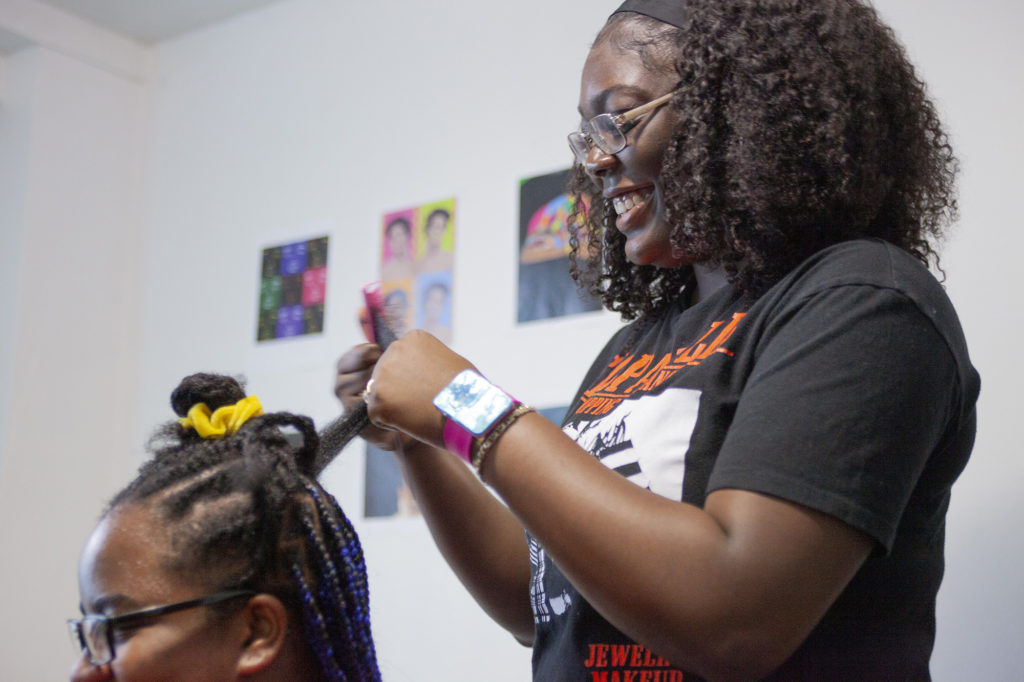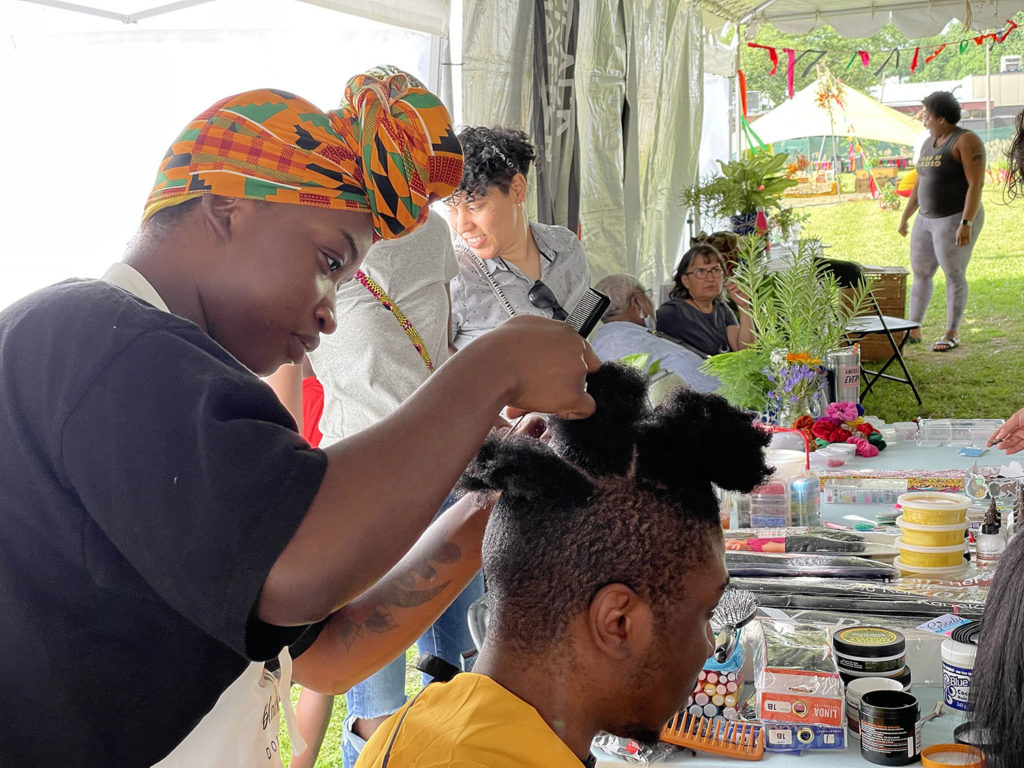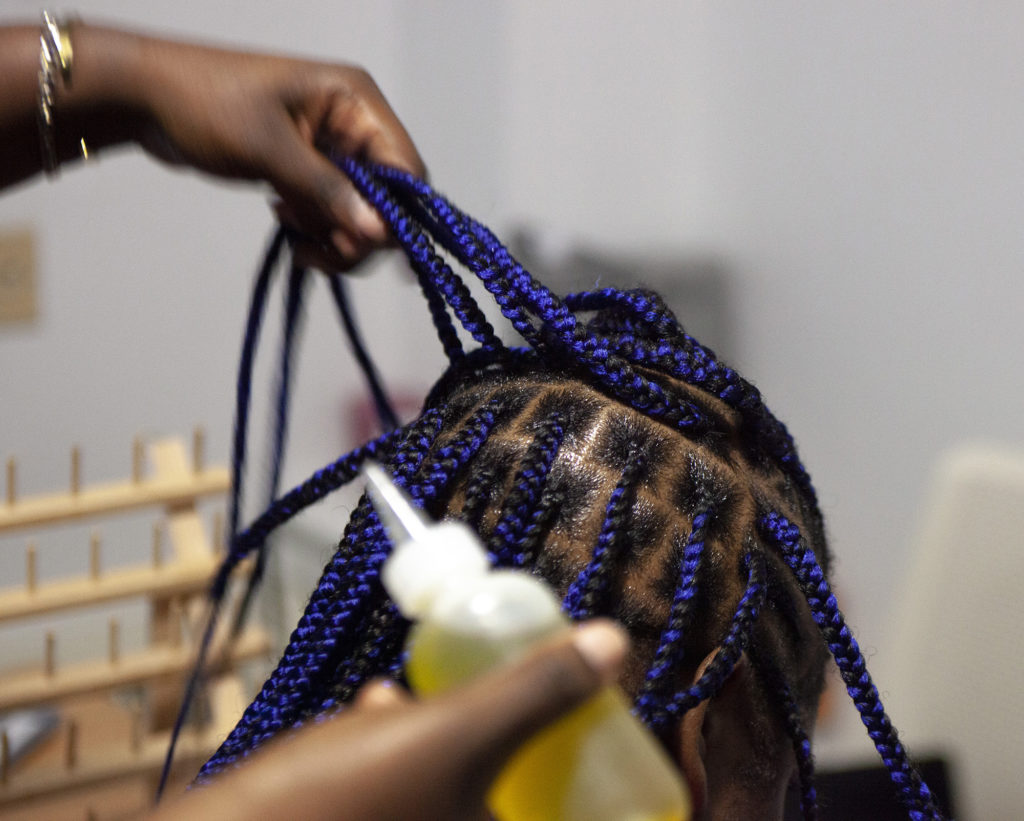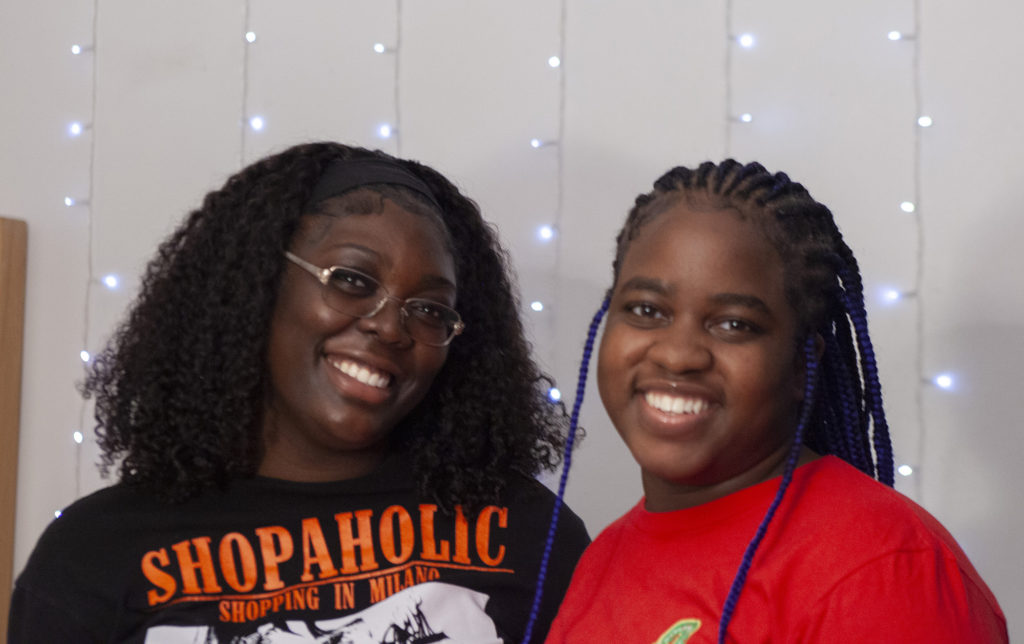

Jessica Anderson ’22 creates mutliple parts on a client’s hair to prepare it for braiding. 
Christine sets KC’s braids and there bases with oil, on Friday, 2021. 
KC and Christine pose for a end-of-hair-cut picture, on Friday night, Nov. 19.
By Tess Curran | Staff Writer | tcurran@mail.smcvt.edu
Kelechi Onuoha ’23 sits in her dorm room chair, excited to get her hair braided. Her stylist, Christine Dossou ’25, stands behind a table and prepares hair oils, pomades and separates braiding hair for the session. She begins to divide and precisely part Onuoha’s natural hair before adding a strand of blue braiding hair.
Hair is a form of expression for many people; whether it be with braids, wigs, or dyeing. There are a plethora of options to choose from, but not everyone has the same accessibility that others have to get their hair done. For a person of color, the number of hair braiders in their area is limited and costly. Pricing can range from $300-500. That set-up is just unobtainable for a young college student; it is too expensive or too far. A few Black female students recognized a need for hair braiding on campus, and have created a community on campus to serve their fellow peers and fill the large hole of hair stylists who can braid in Vermont.
Dossou is a self-taught hair stylist. She met Onuoha this year after a conversation about hair. Onuoha told Dossou about her search for a new hair braider, thus leading to Dossou becoming her new stylist. Onuoha’s most recent braiding session occurred on Nov. 19.
A chair and table were set up as a makeshift workstation and displayed strands of blue hair that were braided into her natural hair. “Because we live in a predominantly white town, we’re limited here, the price to do your hair is so expensive… most girls of color get their hair done in their hometown. And for that, it could be either six hours away or an hour away,” Onuoha said. She recollected a time when a peer couldn’t find any hair braiders in the area. “Therefore, I ended up missing classes. This issue affects one’s appearance and can also be detrimental to one’s education if one has to miss school,” she said.
Although there are some salons in the area, many of them fall within that price range. Protective hairstyles consist of any style that keeps the ends of hair tucked away and makes it less prone to knotting or damage. These protective hairstyles are typically supposed to last about a month, and without someone to do your hair afterward, options are limited. They can remove the style and wear their natural hair, which can leave hair unprotected during cold weather.
This need for hair braiders on campus has created a blooming community of people who can socialize and have their hair braided simultaneously. “It’s more like who you know that can braid kind of on a whim… So if you have a year where in all the classes that nobody knows how to braid hair, then you’re stuck,” Onuoha said. These hair sessions can last between six and eight hours.
“I’ve been doing my hair since I was 12. I remember that day fondly; my mom was cooking. I was in a room trying to learn how to braid, and I got it. And I remember I like ran to the kitchen,” Dossou said. Onuoha personally gets her hair braided with vibrant colors. Recently, she opted for a deep blue. Both discussed childhood memories of having their hair done and accessorized by their mom or a hairdresser.
Jessica Anderson ’22 created her hair styling business, Black Beauty Bounty, which has added to the growing community of hair stylists at the College. Anderson started braiding when she was 11.
“It started as a means of getting others to help me with my assigned chores at home. I had a little system; I braid your hair, and you help me sweep or mop,” she said. “Doing braids on the weekend and then our hockey girls’ team and so on.”
Anderson said that her passion for braiding stemmed from the importance of appearing well-presented. She also noticed the lack of available hair stylists who could braid hair in Vermont, and formed her business as a call to action. Anderson also noted that she teaches people from different communities about their hair textures and how to best care for them.
“Getting clients is very difficult, even though I have a good amount of returning clients. I would love to meet other clients, but it is hard to get the word within the communities,” Anderson said. Some residents of Vermont have accepted the limited access to getting the products and businesses that are needed to see all sides of our community grow,” she said.

